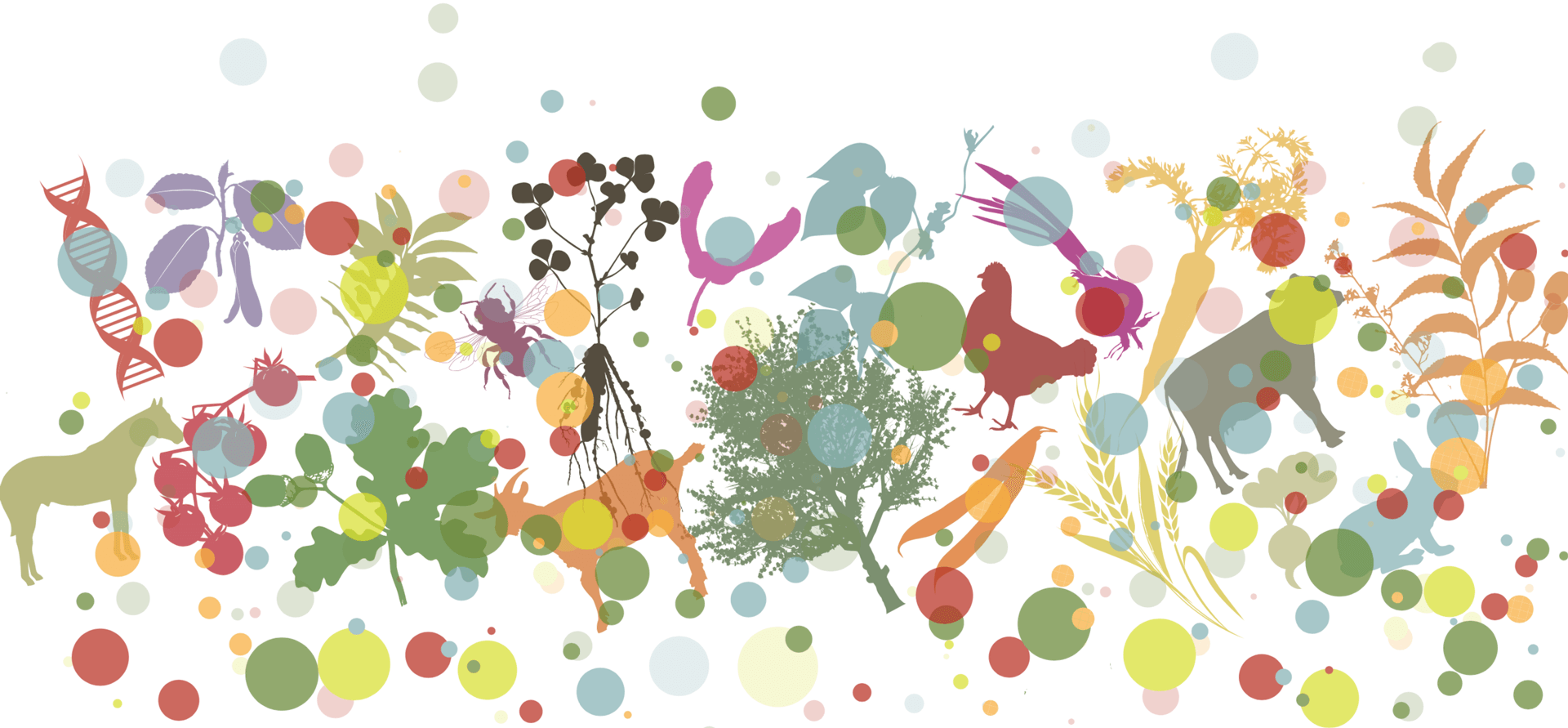‘Zeitoun Ennour’: A new olive (Olea europaea L.) cultivar in Tunisia with high oil quality
Main Article Content
Abstract
An olive breeding program was started in Tunisia in 1993 in order mainly to improve the fatty acid composition of the local cultivar ‘Chemlali Sfax’. ‘Zeitoun Ennour’ is a new cultivar obtained from a cross between ‘Chemlali Sfax’ and the local dual-purpose use cultivar ‘Chemchali Gafsa’. The morphological study of this cultivar showed that eleven characters dealing with fruit and endocarp differed from ‘Chemlali Sfax’, mainly regarding to their respective weights. This new cultivar had the same sensitivity to Verticillium dahliae Kleb and earlier bearing than the original variety. Its olive production was considered as high as for ‘Chemlali Sfax’ but with partial self-compatibility and late maturity. The new cultivar realized a net improvement in comparison with the original cultivar particularly regarding its fatty acid composition with very high oleic acid content (>75 %) and low palmitic and linoleic acid contents (<10 %). The new cultivar was recently released and will be available for growers as soon as possible.
Article Details
Authors retain copyright of the articles published in Genetic Resources and grant the journal right of first publication with open access. All articles published in Genetic Resource are licensed under Creative Commons Attribution 4.0 International License (CC BY 4.0) that allows others to download, share and adapt the work for commercial and non-commercial purposes as long as proper attribution to the original article is given. Genetic Resources permits and encourages authors to post items submitted to the journal (including the publisher's final layout) on personal websites or institutional repositories after acceptance and/or publication, while providing bibliographic details that credit their publication in Genetic Resources.
Barranco, D et al. (2000). Catalogue mondial des variétés d’olivier. Madrid: Conseil Oléicole International, pp. 1–360.
Bellini, E, E Giordani, and A Rosati (2008). “Genetic improvement of olive from clonal selection to cross-breeding programs”. Advances in Horticultural Science 22(2), pp. 73–86.
Ben-Amar, F et al. (2019). “Zeitoun Ennwader - A new olive (Olea europaea L.) oil cultivar in Tunisia with high oil quality and low alternate bearing”. Rev. Mar. Sci. Agron. Vét 7(4), pp. 522–525.
Dabbou, S et al. (2010). “Effect of controlled crossing on the triglyceride and fatty acid composition of virgin olive oils”. Chemistry and Biodiversity 7(7), pp. 1801–1813. DOI: https://doi.org/10.1002/cbdv.200900385.
D’imperio, M et al. (2007). “Statistical analysis on Sicilian olive oils”. Food Chemistry 102, pp. 956–965. DOI: https://doi.org/10.1016/j.foodchem.2006.03.003.
Elloumi, O et al. (2016). “Salt tolerance of new olive varieties issued from a Tunisian breeding crosses”. Journal of New Sciences 15, pp. 1303–1311.
European Commission (2016). “Regulation (EU) 2016/2031 of the European Parliament of the Council of 26 October 2016 on protective measures against pests of plants”. URL: http://data.europa.eu/eli/reg/2016/2031/2019-12-14.
Gharbi, Y et al. (2020). “Investigation of soil-borne fungi, causal agents of olive trees wilt and dieback in Tunisia”. Archives of Phytopathology and Plant Protection.
Godoy, I J et al. (2014). “IAC OL 3 and IAC OL 4: new Brazilian peanut cultivars with the high oleic trait”. Crop Breeding and Applied Biotechnology 14, pp. 200–203. DOI: https://doi.org/10.1590/1984-70332014v14n3a30.
Grati-Kamoun, N and M Khlif (2001). “Caractérisation technologique des variétés d’olivier cultivées en Tunisie”. Ezzaitouna special number, pp. 1–74.
Guellaoui, I et al. (2019). “Chemometric classification of new Olea europaea L. cultivars developed through a crossbreeding program in Tunisia”. Journal of Scientific Agriculture 3, pp. 22–27. DOI: https://doi.org/10.25081/jsa.2019.v3.5453.
Hermoso, M et al. (1991). Elaboración de aceite de oliva de calidad. Vol. 5/91. Colección: Apuntes. Sevilla: Dirección General de Investigación, Tecnología y Formación Agroalimentaria y Pesquera, pp. 36–39.
International Olive Council (1997a). Methodology for primary characterization of olive varieties. Project RESGEN-CT (67/97).
International Olive Council (1997b). Methodology for secondary characterization of olive varieties. Project RESGEN-CT (67/97).
JORT (2017). List of protected varieties object of the plant variety certificates for the year 2016. Official Journal of Republic of Tunisia, 033, 25.04.2017. Tunisia.
Laaribi, I, M Mezghani-Aiachi, and M Mars (2014). “Phenotypic diversity of some olive tree progenies issued from a Tunisian breeding program”. European Scientific Journal 10(6), pp. 292–313. DOI: https://doi.org/10.19044/esj.2014.v10n6p%25p.
López-Escudero, F J and J Mercado-Blanco (2011). “Verticillium wilt of olive: a case study to implement an integrated strategy to control a soil-borne pathogen”. Plant Soil 344, pp. 1–50. DOI: https://doi.org/10.1007/s11104-010-0629-2.
Lopez-Escudero, F J et al. (2004). “Evaluation of olive cultivars for resistance to Verticillium dahliae”. Eur. J. Plant. Pathol 110, pp. 79–85. DOI: https://doi.org/10.1023/B:EJPP.0000010150.08098.2d.
Manaï, H et al. (2007). “Compositional quality of virgin olive oil from two new Tunisian cultivars obtained through controlled crossings”. Journal of the Science of Food and Agriculture 87(4), pp. 600–606. DOI: https://doi.org/10.1002/jsfa.2732.
Mehri, H et al. (2003). “Reproductive behaviour of six olive cultivars as pollenizer of the self-incompatible olive cultivar Meski”. Adv. Hort. Sci 17(1), pp. 42–46. DOI: http://doi.org/10.1400/14142.
Neto, A R et al. (2016). “Environmental effect on sunflower oil quality”. Crop Breeding and Applied Biotechnology 16, pp. 197–204. DOI: https://doi.org/10.1590/1984-70332016v16n3a30.
Rjiba, I et al. (2009). “Profiles of volatile compounds from nine new hybrids obtained by controlled crossings on olive ‘Chemlali’ cultivar and mediterranean varieties”. Natural Product Research 23(7), pp. 622–632. DOI: https://doi.org/10.1080/14786410802155939.
Trigui, A and M Msallem (2002). “Oliviers de Tunisie,” Catalogue des Varietés Autochtones et Types Locaux. Vol. 1. Ministère de l’Agriculture, IRESA, Institut de l’Olivier, République Tunisienne.
Zarrouk, W et al. (2009). “Oil fatty acid composition of eighteen Mediterranean olive varieties cultivated under the arid conditions of Boughrara (southern Tunisia)”. Grasas y aceites 60, pp. 498–506. DOI: https://doi.org/10.3989/gya.021109.







 This journal has been conceived as part of the
This journal has been conceived as part of the